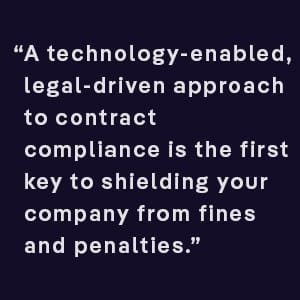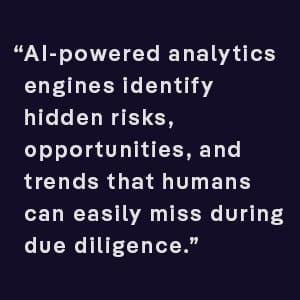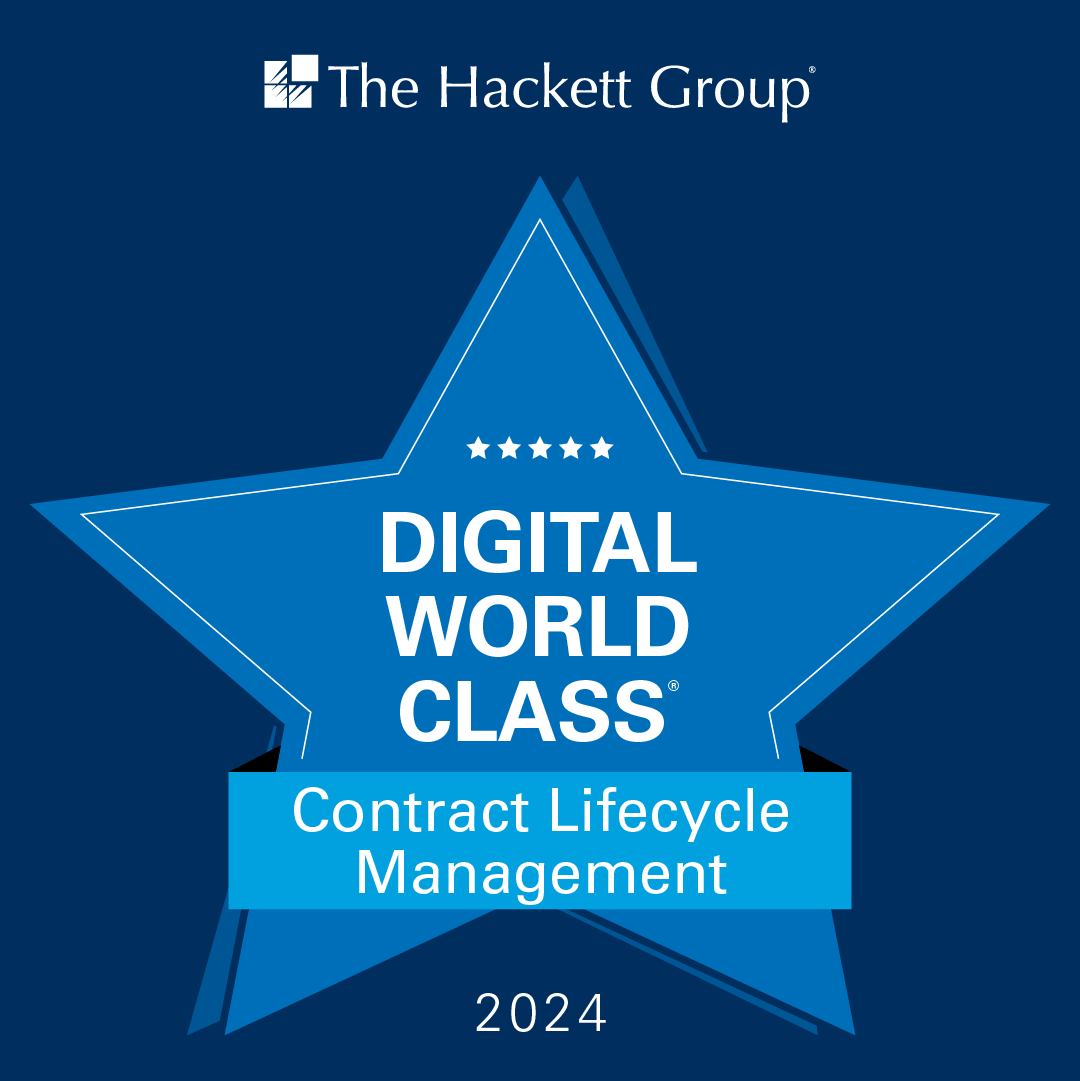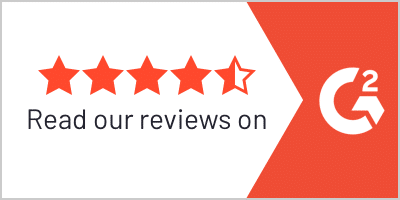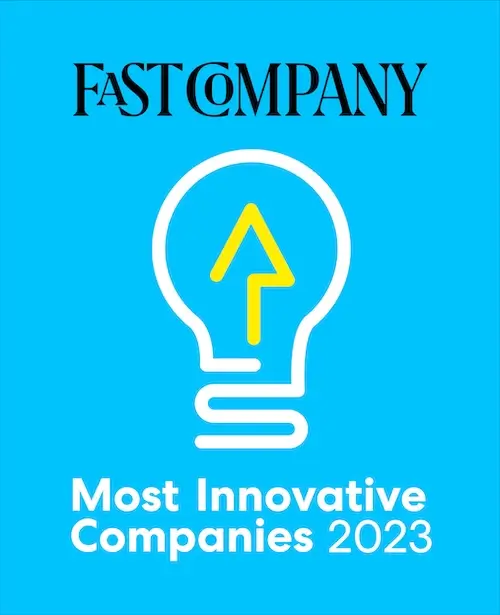In this day and age, organizations must constantly monitor the health of their contract pipeline — and manage their regulatory compliance activities. And neither the pace of business nor the penalties for non-compliance are expected to ease in 2022.
In 2014, World Commerce and Contracting (World CC) estimated that companies lose an average of 9.2 percent of their contracts’ anticipated revenue. Some of the top contracting pitfalls leading to contract value erosion include late engagement of the legal and contracts teams; poor contract governance (pre-and post-award); protracted contract negotiations (those focused on the wrong terms and risks); and complicated contracts altogether.
Nearly a decade later, these pitfalls and others continue to plague business across their enterprise, as shown below. However, many companies have overcome some — or all — of these challenges, by re-engineering or automating several of their contract-related business processes with contract compliance software.
Taking Stock of Your Governance, Risk, and Compliance Posture
A technology-enabled, legal-driven approach to contract compliance software is the first key to shielding your company from fines and penalties, not to mention those reputation-damaging headlines.
For its 2020 report, Consero surveyed 55 Fortune 1000 senior compliance executives. Fifty-one percent of them said their businesses run internal risk assessments annually, and 23 percent said they do so more than once each year. That same percentage said they use contractual provisions to mitigate compliance-related risks when dealing with third parties.
Meanwhile, 61 percent of those surveyed said they identify risk during due diligence, and 52 percent said they use risk assessment tools to avoid unacceptable levels of risk. Whenever high-risk parties are identified, 36 percent turn to audits, frequently terminating or suspending those relationships based on their research.
More broadly, GRC mandates can be viewed through:
- Governance – What are the basic operational policies and practices needed to do business legally and ethically (based on GAAPs)?
- Risk – How can you tactically execute each requirement without exposure to liability or jeopardy?
- Compliance – What are the organization’s strategic needs and responsibilities?
Aligning Risk Management with Company Strategy
Typically speaking, the burden of due diligence, assessing risk, and defining contract provisions falls squarely on the shoulders of corporate legal professionals. A company’s strategies for growth, whether it be it organic or through acquisition, often sets the tone when it comes to risk tolerance. In some industries, organizations, and particular economic circumstances, minimal risk tolerance dictates a company’s entire growth trajectory.
Given the unprecedented circumstances surrounding the past two years, many organizations are prioritizing factors, such as integrity, transparency, discipline, and accountability over profitability and “doing whatever it takes to win.” And many of those can find their comfort zone through a value-compliance-uncertainty framework, which guides the assessment of risk, the management of agreements, and the negotiations with third parties.
Making Contract Lifecycle Management (CLM) Fit Within GRC
The rise of artificial intelligence (AI), machine learning (ML) — and adjacent technologies like robotic process automation (RPA) — enables organizations to accelerate contract authoring, review, and negotiation. Just as importantly, this advanced technology mitigates human error by consistently sticking to the parameters of its programming. It is compliant by design. It is easily trained to assemble contract terms from audit-worthy agreements already in force — or identify the slightest anomaly in third-party buy-side, sell-side, or operational contracts.
In essence, AI-powered analytics engines identify hidden risks, opportunities, and trends that humans can easily miss during due diligence. Their valuable insights include:
- Percentage of terms varying from the standard
- Cost savings realized through process efficiencies
- Cycle times for contract types and business units
- Contract obligations met or missed
The bottom line is that conducting risk assessments — based on cohesive reports and data visualizations from a CLM platform or contract compliance software — is considerably more thorough, accurate, and audit-ready than doing the same with standard reporting tools.
Mapping CLM Features to a Matrix of Business Processes
Depending on your organization’s size, growth strategy, and GRC requirements, contract management systems and solution providers can be seen through the following lenses:
Operational – Streamline the full contract lifecycle from creation to signature
- A single digital contract repository, with essential document management features like access control
- Simplified workflow processes for approvals and redlining
- Automatic alerts to designated stakeholders for pending contract renewals and terminations.
- E-Signature integration for approvals
Analytical – Leverage decision-worthy analytics data on micro and macro levels
- A single digital contract repository with advanced reporting and data visualization dashboards
- In-platform collaboration for negotiations
- Clause library for drag-and-drop assembly and authoring based on vetted clauses
Strategic – Reduce business risk by focusing on legal tech adoption and enterprise-wide integration
- Automated contract compliance review and alerts
- Enterprise integrations with applications for CRM, ERP, and productivity
- Consultative implementation support, training, and business-impact-value engineering
- Global support and localized UIs
In one of its recent reports, Gartner stated that “to be impactful, compliance programs must be built into the operations of the business rather than functioning as a separate process tacked onto employee workflows and systems.”
Meeting Business Goals with Contract Compliance Software
Today, many business executives have determined that their organizations do not meet their own strategic objectives. Their contracts are rather complex or do not include clauses that can protect their company’s interests. What is more, due diligence, contract review, and redlining are so time-consuming that it may be better to terminate a relationship with a third party — at the earliest sign of uncomfortable risk.
So, consider taking a more strategic approach to contract lifecycle management with One Legal Platform. Such legal technology increases governance and transparency, minimizes business risk, and aligns all of your contract practices with compliance standards.
At LegalWeek in New York City, in March, I discussed how contract compliance can help companies to reduce costs and drive company growth. If you couldn’t attend this year’s event or missed this session, stay tuned for our recap video.
Author:

Edward Chick
Connect with us on Linkedin
